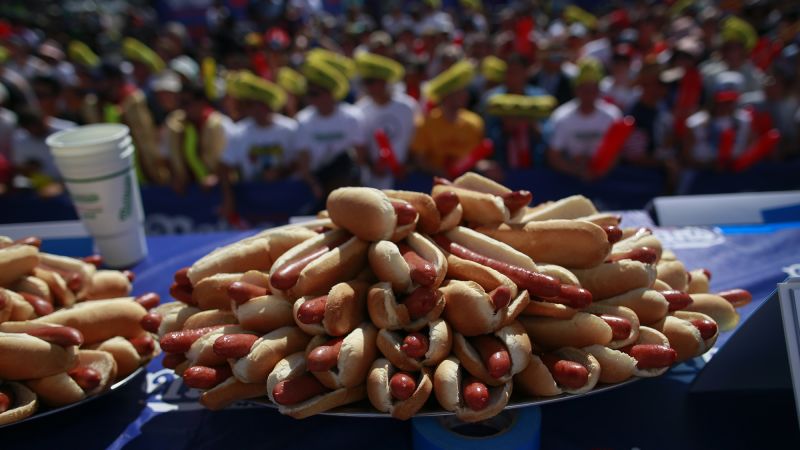
How Nathan’s Famous turned competitive eating into a national spectacle
CNN
Every Fourth of July, starting when she was 15, Jacqueline Lewis and her family come together to honor a great American tradition: the Nathan’s Famous hot dog eating competition.
Every Fourth of July, starting when she was 15, Jacqueline Lewis and her family come together to honor a great American tradition: the Nathan’s Famous hot dog eating competition. “I think people want to know how many hot dogs a human can eat in that amount of time.” Lewis, now 26, told CNN on a warm June day while eating miniature corn dogs (at a leisurely pace) outside of the original Nathan’s location in Coney Island. “I think they want to know.” Lewis and her family aren’t the only ones who want to see how many franks competitors can scarf down in 10 minutes. Each year, close to two million people watch Nathan’s hot dog eating contest on ESPN, according to the frankfurter brand. Tens of thousands of spectators come out to Brooklyn’s Coney Island to watch the event in person. Competitors train for months in advance, preparing their bodies to consume thousands of calories in just a few minutes. When it was announced recently that reigning champion Joey Chestnut was barred from competing this year over his deal with Impossible Foods – a plant-based meat company – it made national headlines. Nathan’s, and the marketing visionaries behind the annual event, helped shape competitive eating as we know it today: a bombastic, showy sport that some say symbolizes America’s obsession with excess. But eating contests date back. Way back. It seems like people have always had a fascination with how much someone can eat and how quickly.

NY attorney general sues Zelle parent company, alleging the payment service enabled widespread fraud
New York Attorney General Letitia James on Wednesday sued Early Warning Services (EWS), which operates Zelle, alleging the electronic money-transfer service fails to protect its users from “massive amounts of fraud.”

If Meta investors had concerns about the company’s huge spending on artificial intelligence infrastructure and talent, they’re likely to be assuaged by its blockbuster earnings report on Wednesday. The results, as one analyst put it, indicates that “AI is becoming a real revenue driver, not just hype.”





















 Run 3 Space | Play Space Running Game
Run 3 Space | Play Space Running Game Traffic Jam 3D | Online Racing Game
Traffic Jam 3D | Online Racing Game Duck Hunt | Play Old Classic Game
Duck Hunt | Play Old Classic Game









